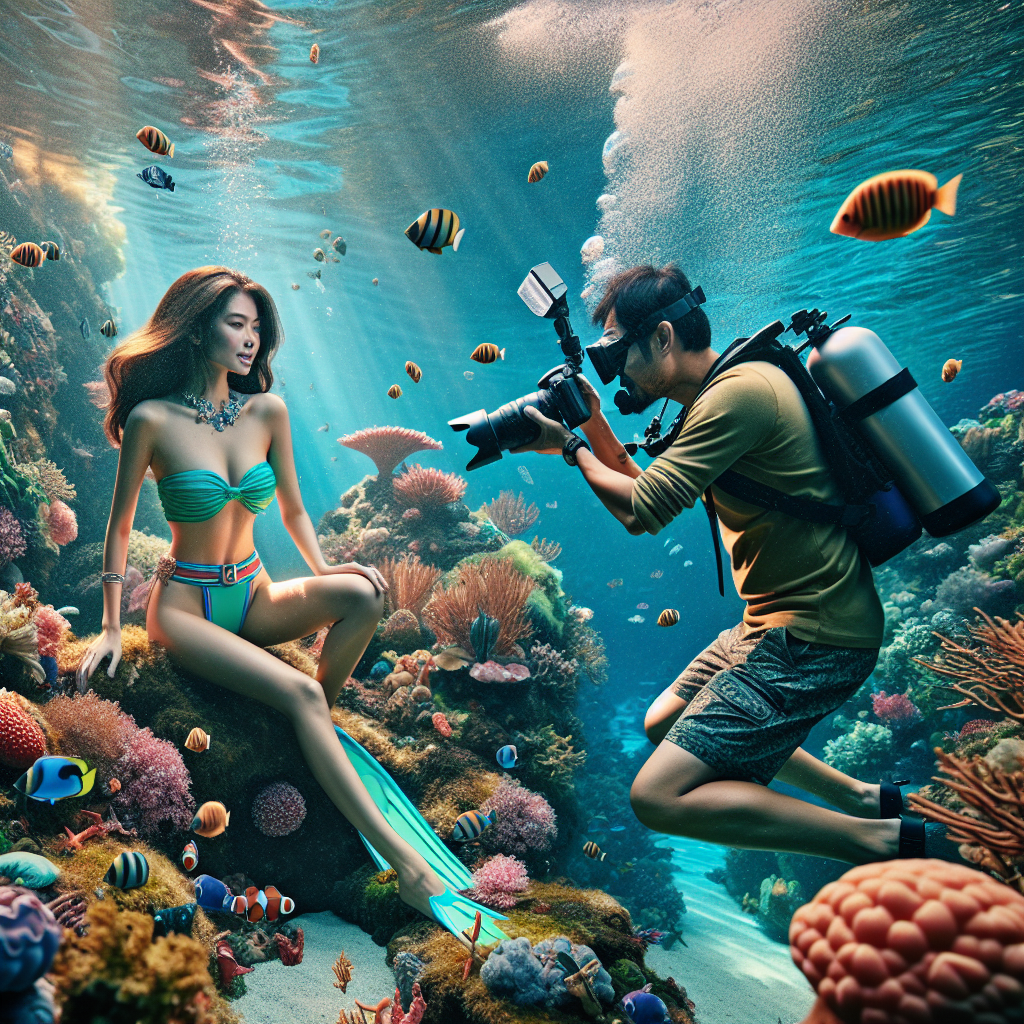Understanding Underwater Photography Gear
For successful underwater bikini photography, the right gear is essential. Start with a waterproof camera housing designed for your specific camera model. If you’re using a mirrorless or DSLR camera, ensure the housing is rated for the depths you’ll be shooting in. A wide-angle lens is highly recommended to capture expansive underwater scenes while allowing for closer shots without distortion. Also, consider investing in an external flash or strobe for proper lighting, as underwater environments can often cast unflattering shadows.
Choosing the Right Location
Selecting the perfect underwater location can either enhance or challenge your shoot. Options vary from tropical beaches with crystal-clear waters to natural spring pools. Look for areas with minimal wave action and plenty of interesting textures or natural backdrops like corals and rocks. Additionally, research local marine life to ensure the safety of your model and maintain ethical wildlife interactions.
Structuring Your Shoot
Planning is key to an effective underwater shoot. Begin by discussing your vision and style with the model prior to diving. Create a shot list to ensure coverage of all poses and settings. Build in time for breaks, as underwater modeling can be physically demanding. Always prioritize safety and comfort, ensuring the model is prepared and briefed on hand signals for communication during the shoot.
Mastering Lighting Techniques
Lighting is a finicky element when it comes to underwater photography. Water absorbs light, especially reds and yellows, which can lead to color imbalances. Use external strobes to illuminate your subject and bring back vibrant colors. Position the strobe at an angle to minimize backscatter—small particles that reflect light and can cloud images. If shooting in shallower water, natural light can yield beautiful results; just remember to shoot within the first fifteen feet for optimal colors.
Pose and Composition
When photographing models in bikinis underwater, it’s essential to consider both pose and composition. Encourage the model to adopt flowing movements that mimic the natural sets of the water, creating a sense of grace and fluidity. Utilize the rule of thirds for composition; place the model strategically along these guidelines to create visually appealing images. Experiment with different angles to capture unique shots—overhead, side profiles, and close-ups can all contribute to an engaging portfolio.
Understanding Water Dynamics
Understanding water dynamics is crucial for mastering underwater bikini photography. The model’s movements will be influenced by the water’s buoyancy and currents. Encourage your model to take gentle, slower movements to enhance the feeling of weightlessness. Be mindful of how these movements will affect hair and fabric; using lightweight materials or fabrics that flow will make a difference in the visuals.
Incorporating Props and Accessories
The right props can elevate your underwater shoot. Consider adding colorful floatation devices, flowers, or even a fabric backdrop that complements the bikini. Items such as underwater fans can create dramatic, flowing effects with hair and fabric. Ensure these accessories are safe, easy to use, and do not hinder the model’s movement.
Post-Processing Techniques
After the shoot, editing plays a crucial role in achieving the desired look. Use photo editing software to enhance color balance and contrast, correcting any distortions caused by underwater conditions. Pay attention to the colors, bringing out the vibrancy of the bikini while ensuring the water doesn’t appear overly bluish. Adjust exposure levels to eradicate shadows and illuminate the subject more effectively.
Focus on Safety Protocols
Safety is paramount in underwater photography. Always have a buddy system in place, ensuring someone is available to assist both the photographer and the model. Familiarize yourself with the dive site and any associated risks, such as aquatic life or strong currents. Provide necessary equipment such as flotation devices, and make sure to equip the model with proper snorkeling or diving gear if needed.
SEO and Social Media Considerations
Finally, to ensure your underwater bikini photography reaches a wider audience, focus on SEO techniques. Use keywords relevant to your photography niche – such as “underwater photography techniques” or “bikini photography tips.” Utilize alt text for images when uploaded online to enhance visibility. Engage audiences through social media platforms like Instagram and Pinterest by showcasing your unique underwater shots and using relevant hashtags (#UnderwaterPhotography, #BikiniShoot, etc.).
Final Thoughts for Consideration
Underwater bikini photography is a blend of art and technical skill. Practicing these techniques will not only improve your shoot quality but also solidify your reputation within the industry. Remember, experience builds confidence—so immerse yourself in underwater photography to truly capture the enchantment beneath the surface.



